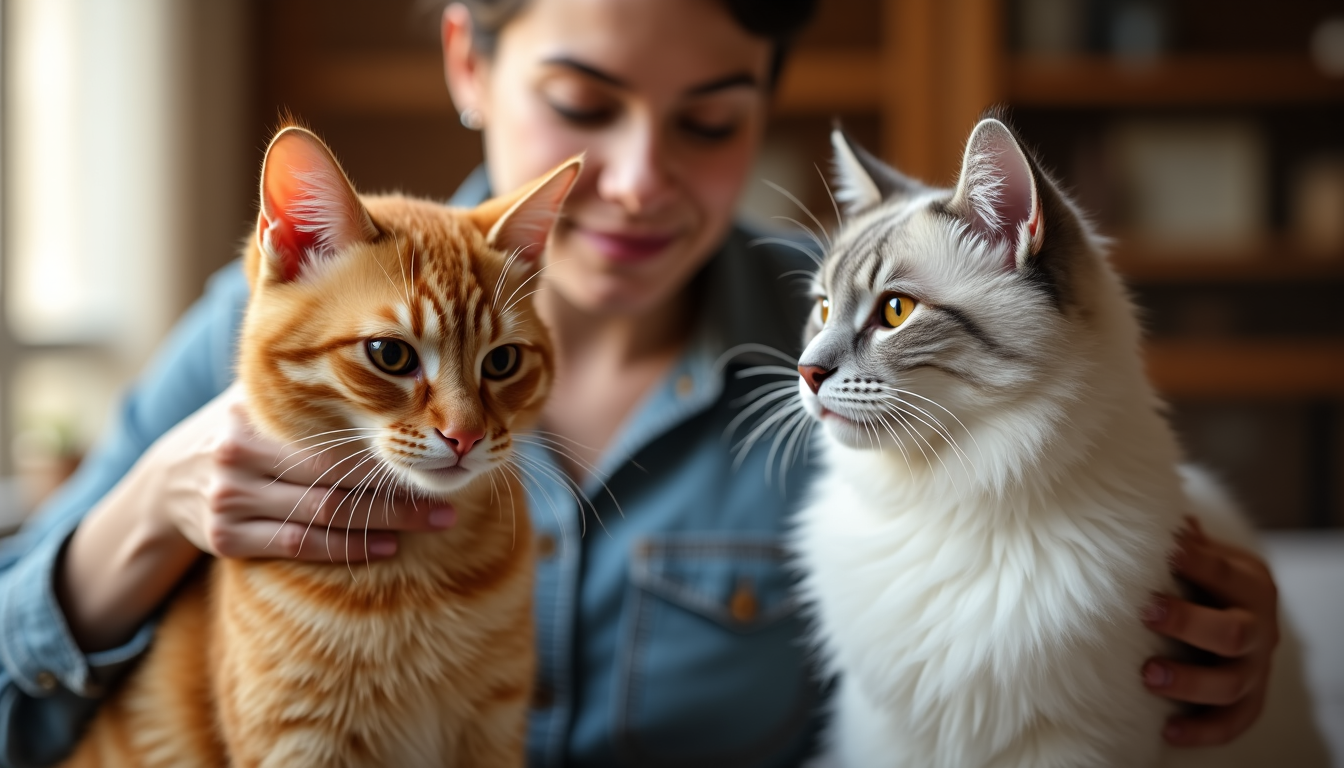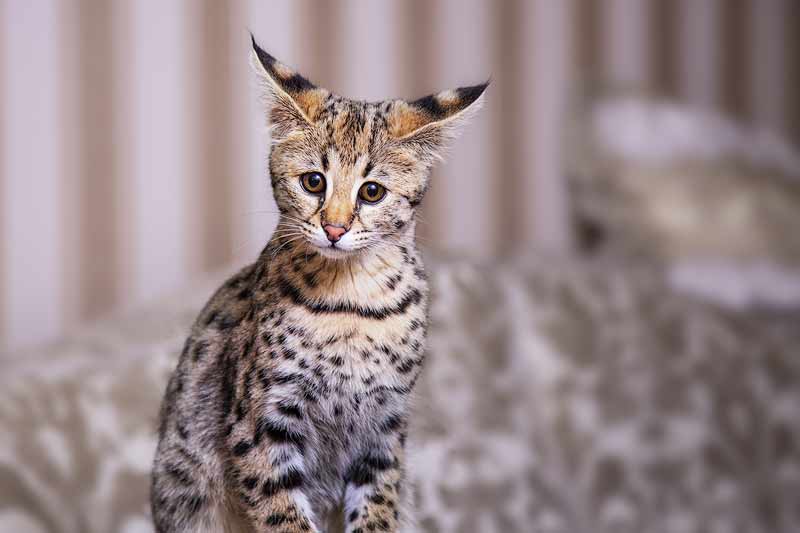People are twice as many likely to be allergic to cats than dogs. This makes many pet lovers ask if hypoallergenic cats really exist. Some breeders claim their cats won’t cause allergies and charge up to $27,000, but the truth isn’t that simple.
The reality might disappoint many potential cat owners – no cat is completely hypoallergenic. Every cat produces a protein called Fel d 1 through their saliva, skin, and urine. Siberian cats naturally produce lower levels of this allergen, but science hasn’t proven the existence of truly hypoallergenic cats yet.
The science behind cat allergies needs more explanation. We want to look at breeds that might work better for allergy sufferers and find practical solutions for cat lovers with allergies. Let’s break down the facts and find what allergists might not tell you about hypoallergenic cats.
The Science Behind Cat Allergies
Many people think cat fur causes their sneezing fits around cats. The truth might surprise you – specific proteins in a cat’s body fluids and secretions are the real triggers. This brings us to a significant question: do hypoallergenic cats exist?
What actually causes cat allergies?
Your body’s immune system reacts to proteins found in cats’ saliva, urine, and skin secretions – not their hair. People with sensitive immune systems mistake these proteins as dangerous invaders. Their bodies respond with classic allergy symptoms: sneezing, itchy eyes, and breathing problems.
These allergens come from several sources in cats:
- Sebaceous (skin) glands
- Salivary glands
- Anal glands
- Lacrimal (tear) glands
- Urine
Cat allergies affect approximately 10% of the U.S. population. Research shows these allergies occur twice as often as dog allergies. One specific protein affects 90-96% of people with cat allergies. This fact helps us answer the question about hypoallergenic cats.
The Fel d 1 protein explained
Fel d 1 causes most cat allergy symptoms. This small glycoprotein (35-39 kDa) triggers 60-90% of all allergic reactions to cats. Cats produce this protein in their sebaceous and salivary glands. They spread it through their coat while grooming.
The protein’s structure and behavior make it especially troublesome. Its unique configuration often triggers human immune responses. Fel d 1 floats easily through the air and stays airborne at least 30 minutes after disturbance. The protein sticks to surfaces and stays active 6-9 months after contact.
Why some cats produce less allergens than others
Every cat produces Fel d 1, which makes truly hypoallergenic cats impossible. All the same, some cats produce different amounts of this protein.
Hormone levels affect allergen production. Unneutered male cats make more Fel d 1 than females or neutered males. Research shows intact males have 5.46 units per gram of fur, while neutered males have just 1.28 units.
Some breeds naturally produce less Fel d 1, though individual cats vary. Siberian cats, Russian Blues, and Balinese cats often show lower allergen levels. Scientists have made ground progress by creating genome-edited cats. These cats produce 72% less Fel d 1 in their fur and almost 99% less after washing.
Even cats that produce low levels of allergens can trigger reactions in sensitive people. This explains why the answer about hypoallergenic cats remains complex.
Are Hypoallergenic Cats Real?
Many companies and breeders market certain cats as “hypoallergenic,” but do these claims hold up? Let’s get into what science tells us about these supposedly sneeze-free felines.
The truth about 'hypoallergenic' marketing claims
The hypoallergenic cat business makes a lot of money, with buyers paying thousands or maybe even tens of thousands of dollars for cats marketed as allergen-free. In 2006, a company called Allerca (later known as Lifestyle Pets) said they had developed truly hypoallergenic cats. They claimed their cats’ Fel d 1 had a different molecular weight that wouldn’t trigger allergies. These claims fell apart when customers kept having allergic reactions, and lab tests showed their cats’ Fel d 1 protein was no different from regular house cats.
What research actually shows about low-allergen cats
Science paints a different picture than what marketers tell us. A newer study, published in 2014 by Clinical and Translational Allergy, found that these so-called hypoallergenic cats did produce and spread less Fel d 1 compared to regular cats. The Siberian breed shows promise too – about 75% of people with cat allergies say they don’t react to these cats.
Scientists have made progress with CRISPR gene editing technology to change the CH2 gene that makes Fel d 1. Their tests on a cat named Alsik showed Fel d 1 levels dropped by 61.6% in saliva and 70.9% in fur after washing.
Why no cat is 100% allergen-free
We have a long way to go, but we can build on this progress. Allergists and researchers agree on one key fact: there is no such thing as a 100% hypoallergenic cat. Even hairless Sphynx cats produce allergens in their skin, saliva, and urine. Every cat makes Fel d 1 protein whatever their breed, age, hair length, or weight.
These allergens live in the cat’s skin oils and saliva. Cats spread these proteins through their coat and into the environment when they groom themselves. The biggest problem isn’t the fur – it’s what’s on it.
Cat Breeds That Produce Fewer Allergens
Want to find cats that won’t make you sneeze as much? Some cat breeds work better if you have allergies, though no cat is 100% allergen-free. The sort of thing I love about these “low-allergen” breeds is how they teach us why certain cats might be a better match for people with sensitivities.
Siberian cats and their unique genetics
Siberian cats are one of the best breeds to consider if you’re wondering about hypoallergenic cats. These cats have beautiful long coats, yet studies show about 50% of Siberians have by a lot lower allergen levels than regular street cats. Their Ch1 and Ch2 genes have mutations that affect how they produce the Fel d 1 protein.
Scientists looked at over 300 Siberian cats and found that some had really low allergen levels. These cats could live with people who have severe allergies. The numbers are impressive – 75% of people with cat allergies say they don’t react to Siberian cats.
Hairless and Rex varieties: Do they help?
The Sphynx isn’t really hairless – it has a thin layer of peach fuzz. Many people think these cats are perfect if you have allergies, but they still make allergens in their skin, saliva, and urine. They help mainly because they spread fewer allergens around. You’ll need to bathe them often to keep dander and oils down.
Devon Rex and Cornish Rex cats have short, curly fur that doesn’t shed much. Their special coat means allergens don’t spread around your house as easily. These Rex cats still make the Fel d 1 protein – they just don’t spread it as much because they shed less.
Male vs. female cats: Which produce fewer allergens?
A cat’s sex makes a big difference in allergen levels. Research shows that non-neutered male cats make 3-5 times more Fel d 1 than females or fixed males. One study found 5.46 units of Fel d 1 per gram of fur in intact males, while fixed males only had 1.28 units.
Female cats make fewer allergens, whether they’re fixed or not. Fixing male cats brings their Fel d 1 down to match female levels. That’s why female cats or neutered males might work better if you’re asking about hypoallergenic cats.
Note that each cat is different, whatever their breed or sex, so there’s no guarantee you’ll find a completely low-allergen cat.
Practical Solutions for Cat Lovers with Allergies
Want a cat but your allergies get in the way? You might have heard about “hypoallergenic cats” – but since they don’t really exist, let’s look at some real ways you can make living with cats possible even if you have allergies.
Allergy testing before adoption
You need to know if cats are the real cause of your allergies. Don’t guess based on how you feel. A proper allergy test will tell you exactly which cat proteins make you react.
You can get two types of tests: blood tests that check for IgE antibodies your body makes when exposed to cat allergens, and skin prick tests where doctors put tiny amounts of allergens on your skin to see what happens. These tests show if you react to the main Fel d 1 protein or other cat allergens like Fel d 2, Fel d 4, or Fel d 7.
Environmental modifications that work
Taking the cat out of your home works best if you have bad allergies, but most cat owners don’t want to do this. Here are some proven alternatives that help:
- Keep some rooms cat-free, especially where you sleep. These spaces have way fewer allergens in the air
- Take out your carpets and put in smooth floors—carpets trap 13 times more cat allergens
- Use wet cloths to clean instead of dry dusting that sends allergens into the air
- Get HEPA air filters, which cut airborne allergens by 30-40%, but they won’t help with allergens that settle in dust
Many people think bathing cats often helps, but it doesn’t last long unless you do it twice every week – and most cats hate that.
Allergen-reducing products: What helps
New products can lower your exposure to Fel d 1. Purina Pro Plan LiveClear cat food stops allergens in cat saliva and cuts allergen levels by 47% after three weeks. Some sprays claim they break down 98% of cat allergens before they touch your skin.
HEPA air purifiers help clean the air, but many people don’t notice much difference in their allergy symptoms.
Building tolerance safely over time
Some people’s allergies get better with regular cat exposure while others get worse. Allergy shots can retrain your immune system over 3+ years, but they cost about $250 each month.
You might build some tolerance without shots. A Swedish study found something interesting – children with five or more pets had no allergies, while 49% of kids without pets developed them. Early exposure to multiple pets seems to help prevent allergies.
Conclusion
Marketing claims about hypoallergenic cats don’t match what science tells us. While completely allergen-free cats don’t exist, cat lovers with allergies still have hope.
The science shows some cats naturally produce lower levels of Fel d 1 protein. Siberians, females, and neutered males lead this group. This fact, plus some smart changes at home and new options like special cat foods, helps many allergy sufferers live happily with cats.
You won’t find a truly “hypoallergenic” cat, but you can find ways to make it work. Pick a breed known for low allergens, set up some cat-free spaces in your home, clean regularly, and look into allergy shots. These steps can help you build a comfortable life with your feline friend. Understanding the science behind allergies lets you make smart choices about having a cat.
Each person reacts differently to cats – what helps one person might not help another. The best approach starts with proper allergy testing. Then you can try different management strategies until you find what works for you.

